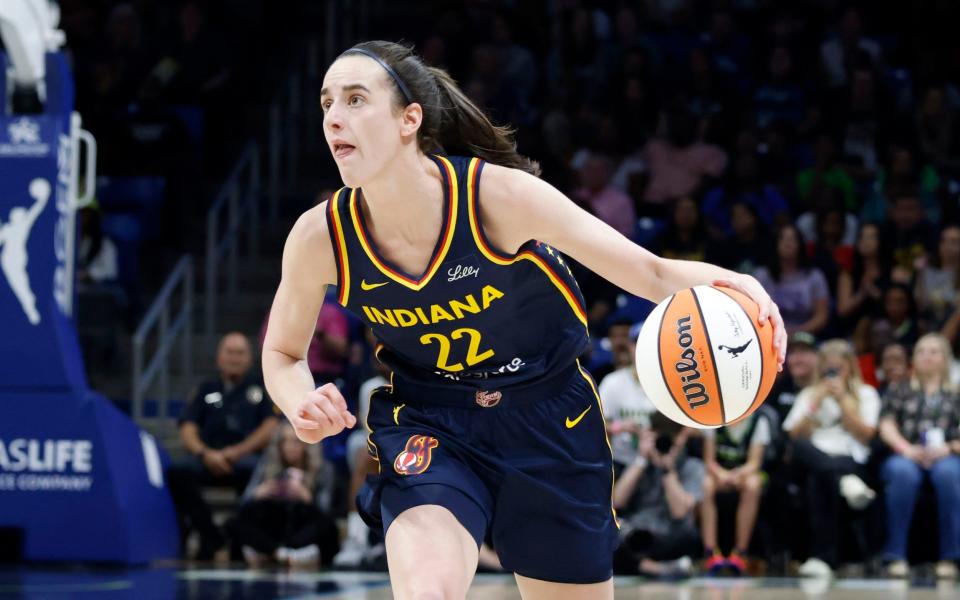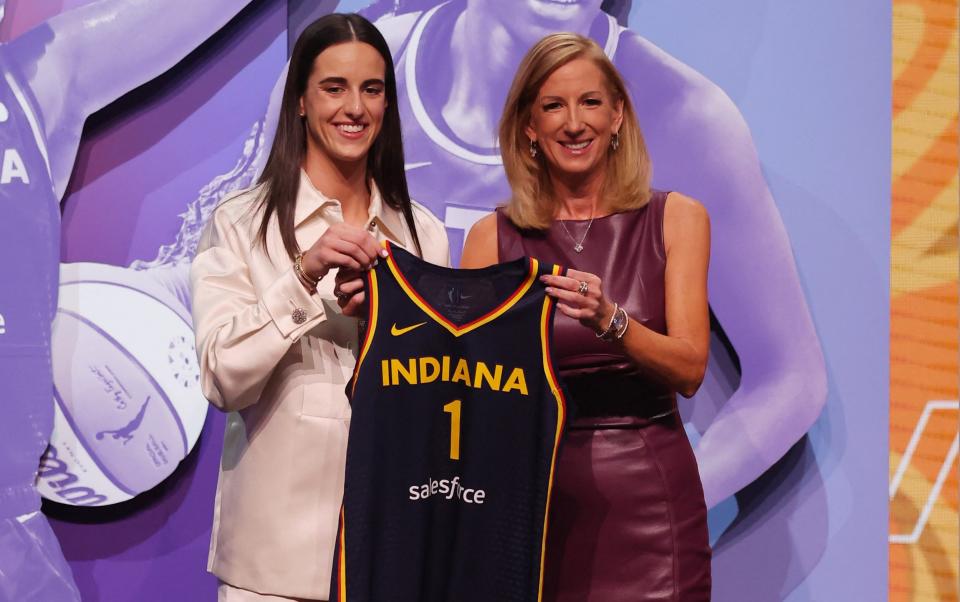Caitlin Clark salary highlights huge gender pay disparity in US basketball

By any measure you choose Caitlin Clark is one of the most valuable stars in basketball, a sport which is not short of cash. Yet after signing with the Indiana Fever as the first pick of the WNBA draft last month, Clark will start on a surprisingly low salary. She will be paid $76,535 in her first year as a pro, a touch over £60,000. It is middle management money for one of the most marketable athletes in the world.
This is the standard rate for the top-picked rookie in the WNBA, so not some grievous personal insult as it might be in British sport, where players largely negotiate their own deals individually. Yet it does not compare favourably with the male NBA equivalent. This year’s No 1 draft pick in their league will make more than $10 million, so Clark is on a 137th of her male equivalent.
Of course the NBA makes a good deal more money ($10 billion last year year) than the WNBA (projected to reach $200 million, some of which is an NBA subsidy), but that is a 50-fold disparity, not 137. Yet no one playing in the league is asking for total parity with the men, just an equivalent slice. “We are not asking to get paid what the men get paid,” said Las Vegas Aces Kelsey Plum in 2022. “We’re asking to get paid the same percentage of revenue shared.”
The collective bargaining agreement in the NBA gives players 50 per cent of “basketball related income”, the WNBA players see about 10 per cent. As a result many players risk burnout and injury by playing overseas during the American off-seasons to supplement their income. There is no salary cap in equivalent leagues around the world, so WNBA players can double or triple what they make from their teams at home.

None of this is new, but Clark’s profile is such that some powerful people have begun to take notice. “Even if you’re the best, women are not paid their fair share,” said US President Joe Biden.
‘Two seasons ago players were having to sleep in airports’
“People who haven’t been following it extremely closely are learning about the disparity now,” says Shawn Medow, US reporter for SportBusiness. “If you get drafted at the bottom of the NBA draft you’re going to be making more than Caitlin Clark, who was the top pick for the WNBA.”
It is not just in base salary where Clark and her peers have reason to feel undervalued. “A big issue for WNBA players is having to take commercial flights,” says Medow. “As recently as two seasons ago players were having to sleep in airports because their flights were delayed. Shouldn’t every game be a charter when you’re 6ft 4in tall and flying across the country? I don’t think Leo Messi is sitting in coach on a United Airlines flight any time soon.”
The WNBA announced last week that charter flights for all games will be phased in for the next two seasons, with the 2024 season getting underway on Tuesday.
Opinions differ on who is to blame for the slow improvements in pay and working conditions. “My personal opinion is it’s partially the league, the NBA,” says Medow. “If you look at the NWSL [the top women’s soccer league in the US] they are independent of the MLS and that allows them to make their own rights deals, to get their own sponsorships and push further in what they want to do.”
‘Some owners are still a bit cheap’
Women’s basketball journalist Jackie Powell says: “There is still an ownership structure within the WNBA where you have owners who believe that by owning a WNBA franchise, they are doing a civic duty. There are owners that still exist that are a bit cheap.
“Factions emerge of people who are like, ‘Yes, we’re going to invest in all that we can’ and then you have some franchises that still don’t have the capital to invest as much, and they’re too stubborn to sell their franchises.”
So it may be a long wait for female basketball players in America to reach an equivalent share of revenue to their male peers, although a new media rights deal should hasten that change. This is a league which everyone agrees has the ability to make a lot more money that it does currently and Clark is expected to speed up that process.
The value in the future could be consolidated around stars rather than teams or the league. It is certainly easier to imagine personalities having broader appeal than teams and the league as a whole, especially on social media. The trouble then is ensuring those beyond the top bracket earn their fare share. The league is still 12 teams with 12 players each and “there’s not 144 sponsorships lying around”, says Medow.
And do not fret too much about Clark’s financial future. Her endorsement deals with Gatorade, Buick and State Farm have many more years to run and recently it was reported that she was close to agreeing an eight-year deal with Nike worth $28 million. Not bad for a side hustle.

